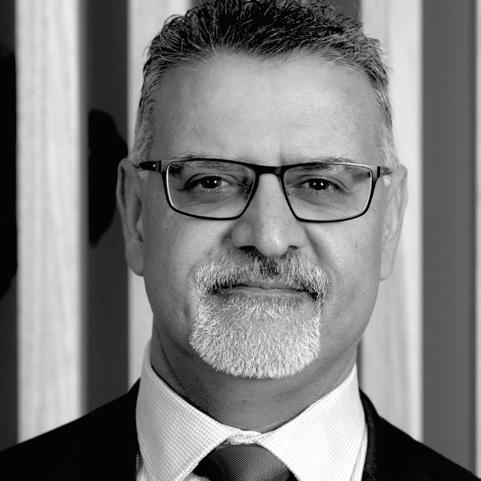
4 minute read
NURTURING A CONTEMPORARY PROJECT TEAM
PROJECT MANAGEMENT HAS BEEN GOING THROUGH A STEP-CHANGE WITH THE INTRODUCTION OF AGILE PRACTICES, ADVANCED TECHNOLOGIES, AND A FOCUS ON PEOPLE SKILLS.
The practice of project management is not new with large projects such as the pyramids, the Pantheon or the Great Wall of China being major constructions that were coordinated and built thousands of years ago. The history of project management reveals that the workforces for these large projects were well organised and comprised of soldiers, common people, and criminals. Not much has changed until recently.
It was not until the early 20th century that managing projects became recognised as a separate field of management. Following an evolution of practice in the late 1950s, we have been going through a step change since 2002.
The COVID-19 pandemic has rapidly accelerated that change, driving more project teams to operate virtually. We now rely even more on technology to support how projects operate, but this creates a far more complex environment in which people in our project teams need to work together. As we emerge from the wilds of COVID-19, what can we learn from project teams operating in distributed circumstances?
Research on project teams at the University of Canberra during the COVID-19 pandemic identified significant differences between traditional and contemporary project management teams and flagged opportunities to further mature the way in which project teams operate. The result of the study found that contemporary project teams:
1. Are more likely to have a positive impact on the business.
2. Value being innovative and collaborative (even though they may not be).
3. Are more flexible in their culture, organisational form, and geographical location.
4. Consider they are more resilient and risk tolerant (although experience from the researcher questions this).
5. Have a balance of internal and external networks that are used to fill gaps in knowledge and to better understand, innovate and transform.
6. Use internal communication that is regular and multi-modal, particularly for remote teams.
7. See the role of the customer as collaborative (but not embedded).
8. Prefer a coaching style to managing the work with value placed on the ability to resolve conflicts in the team.
9. Value leadership rather than direction from project governance.
10. Prefer a team of people who are cross-functional rather than specialists.
11. Align more often with flexible and agile project management methods with the flexibility to select tools that are integrated and support collaboration.
The preference for greater flexibility is common amongst organisational groups. However, this may not be appropriate for some projects that need to be tightly focused on the objectives. Therefore, project objective, uncertainty and an appropriate culture need to be aligned to achieve success.
A comparison of current practice with contemporary hypotheses on high-performing teams emerging in the literature suggest that there is still room to improve the way we manage project teams. Aspects for improvement are that project teams could:
• Focus more on impact and outcomes rather than time/ cost/scope.
• Align team culture with project objective.
• Undertake resilience building to better deal with uncertainty.
• Develop discrete and diverse networks to span structural holes, influence industry or practice, and contribute to the broader community.
• Influence the customer to own and manage benefits and be more embedded in the project.
• Allow the project team room to be more self-organising.
• Seek opportunities to tailor systems/technology to the project and use data to assist in managing the project.
• Adapt the project methodology to the features of the project.
• Build trust and collaboration through occasional face-to-face contact and establish small clusters in larger projects.
• Value team stability above everything else.
In considering an appropriate team culture, a model is emerging from the current research that is informed by Quinn & Rohrbaugh’s Competing Values Framework, which was published in 1981.
‘Friendly Villagers’: Teams delivering complex projects with high uncertainty and a focus on business impact should build a ‘Clan’ culture and direct their networking effort internally by building diverse and strong connections within the organisation.
‘Patriotic Gangs’: This indicates that project teams that have clear objectives and moderate/low complexity should focus on achieving project efficiency (time, cost, quality). They can minimise their external networking to maximise their efforts on delivering outputs.
‘Networked Tribes’: Project teams delivering complex projects with high uncertainty and a focus on preparing for future opportunities should create an ‘adhocracy’ culture. They need to develop a balance of internal networks with strong connections and a broad external network with diverse and weak connections.
‘Digital Migrants’: Project teams with clear objectives that are focused on providing value to an external customer should adopt a ‘market’ culture. They should direct their networking effort externally with a diverse set of bridging connections.
The contention from the research is that teams that have a culture that is aligned with the objective of the project and a suitable engagement strategy are more likely to experience better team performance.
You should consider what the uncertainty and complexity of your project is and how you might develop a project team culture that aligns with the success criteria you are measured against.
The best indicator that your team culture and objective are aligned is team stability. So if you are experiencing churn in your project, ask yourself if you have the right culture to start with.
Author: David Williams leads the Business Systems Delivery branch for an Australian Government agency. He is the senior supplier on numerous project boards for the development of complex ICT systems within the government sector. He has over 35 years’ experience in projects ranging from the construction of Parliament House, Collins Class submarines, business transformation and ICT projects. He is a Certified Practicing Project Director (CPPD) and a Chartered Project Professional (ChPP).







